Can You Use a USA PS2 BIOS on a European Game ROM?
Trying to play a European PS2 game using a USA BIOS, but nothing loads or the screen’s all wrong? You’re dealing with region-lock rules hardwired into the PlayStation 2’s BIOS. Even on emulators like PCSX2, region mismatches can break your setup. Here’s what you need to know to fix it fast.
What Is a PS2 BIOS and Why Does Region Matter?
A PS2 BIOS (Basic Input/Output System) is the software layer your console or emulator uses to boot and run games. It tells the hardware what region it belongs to, what system language to use, and what video format to follow. BIOS files are region-specific, meaning a USA BIOS is designed for North American NTSC games, while a European BIOS is made for PAL format games.
Each BIOS contains embedded data that restricts compatibility to games from its own region. That’s why using a USA BIOS with a European ROM often results in:
- The game not booting at all
- Black screens or graphical glitches
- Incorrect refresh rates or screen flickering
- Emulator errors or crash logs referencing BIOS conflicts
NTSC vs PAL: Why It Matters for Compatibility
When we talk about regions, we’re not just talking about language or game titles. There’s a real hardware difference between NTSC (used in the US, Canada, and Japan) and PAL (used in Europe and other regions).
| Region | Video Standard | Refresh Rate | Resolution |
| USA | NTSC | 60 Hz | 720×480 (typically) |
| Europe | PAL | 50 Hz | 720×576 (typically) |
So when a USA BIOS tries to load a PAL game, it assumes the video signal should run at 60 Hz. But the game was coded for 50 Hz. That mismatch causes issues with timing, display, and audio synchronization.
Even with modern monitors, these mismatches can affect gameplay especially with emulators like PCSX2 that aim for cycle-accurate performance.
Can PCSX2 Emulate Cross-Region Games Using One BIOS?
Technically, yes but not perfectly.
PCSX2 does allow you to run games from other regions, even if your BIOS file doesn’t match. But this flexibility depends on:
- The BIOS version and its supported features
- Whether the game requires specific region functions
- How the emulator is configured (fast boot vs full boot)
- Whether you’ve enabled skip BIOS splash or region overrides
If you’re trying to boot a European ROM with a USA BIOS:
- The fast boot option may skip the region check, and the game might load
- But in-game cutscenes, menus, or timing-based events can behave unpredictably
- Some games just won’t launch or crash immediately after the intro screen
That’s why PCSX2 developers recommend: Always match your BIOS region to the game’s region for best compatibility.
What Happens If You Force It Anyway?
If you try forcing a PAL ROM to run on a USA BIOS without changing emulator settings:
- Video output may fail games freeze on black screens or stutter
- Controls lag due to timing mismatches in PAL/NTSC cycles
- Save data corruption occasionally occurs when game logic breaks
- Audio crackles or desyncs especially in cutscenes
PCSX2 does include settings like “Automatic Gamefixes” and “Enable Patches,” but these can only do so much. They’re meant to patch minor compatibility issues, not correct a region mismatch at the BIOS level.
How to Fix Region Issues in PCSX2?
Here’s how to run European games the right way even if you’re on a USA-based setup:
1. Use the Right BIOS for the Game Region
If you’re playing a European ROM, always use a PAL-region BIOS like:
- SCPH-70004 (Europe)
- SCPH-39004 (Europe)
- SCPH-50004 (Europe)
BIOS files should be stored in:
bash
/pcsx2/bios/Make sure all parts are included:
- .BIN (main BIOS file)
- .ROM1, .ROM2
- .EROM (for DVD functions)
2. Check Video Output Settings
Set PCSX2 to match the game’s native video mode.
Go to:
pgsql
Config > Emulation Settings > GS Window > Refresh Rate Override- For PAL games, try setting it to 50 FPS or let it auto-detect.
- Avoid forcing NTSC settings with PAL games.
3. Use “Full Boot” Instead of “Fast Boot”
The fast boot feature skips region checks but may cause crashes.
Use full boot when testing cross-region ROMs so the BIOS handles region validation correctly.
What If You Only Have One BIOS?
You can still try these options if you don’t have the matching BIOS file:
1. Enable Skip BIOS Splash in PCSX2 Settings
This sometimes allows games to bypass region checks and boot anyway.
2. Use a Patched ISO
Some ROMs have been modified to remove region locks. Be careful modified ISOs can be unstable.
3. Try a Multi-Region BIOS Dump
Rare, but some dumps contain data from multiple regions. These are usually extracted from dev kits, and not all emulators support them properly.
4. Create a Second PCSX2 Instance
Some players keep one version of PCSX2 with a USA BIOS and another with a European BIOS for better compatibility management.
Can a USA PS2 Console Play PAL Games?
No, not without modification.
Physical PS2 consoles are region-locked at the hardware level. Even if you somehow inject a European disc into a USA console:
- The disc won’t boot
- The screen may go black
- Or the system will display a region error message
People bypass this using:
- Modchips (hardware-based)
- Free McBoot or other software loaders
- Or using backups with patched regions
But these methods require advanced knowledge and usually void your console’s warranty.
Conclusion: Match BIOS to ROM for Reliable Results
If you want smooth, crash-free gameplay using PCSX2, always use a BIOS that matches the region of your game ROM. It solves more problems than it creates and ensures your emulator performs the way it should.
Mixing a USA BIOS with a European game can technically work in rare cases but you’ll face issues like stuttering, screen bugs, or complete failure to launch. Emulators like PCSX2 are powerful, but even they can’t fix a BIOS mismatch without proper setup.
Save yourself the hassle use a European BIOS for PAL games and a USA BIOS for NTSC games. That one step can save hours of frustration.
- Why Does AetherSX2 Say “Missing BIOS” Even After Adding It? - September 23, 2025
- How Do Developers Test Emulators Without Using BIOS Files? - September 23, 2025
- Can You Transfer a PS2 BIOS Between Different Consoles? - September 23, 2025
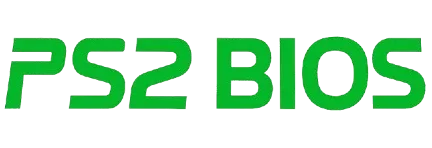
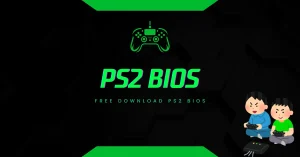
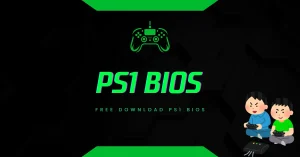

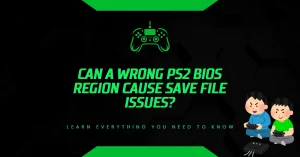
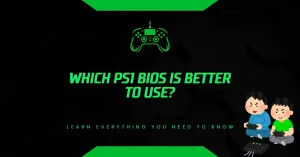
![PS2 Emulator Download for PC | PCSX2 Emulator [Official] PS2 Emulator Download for PC PCSX2 Emulator [Official]](https://bios-ps2.com/wp-content/uploads/2025/10/PS2-Emulator-Download-for-PC-PCSX2-Emulator-Official-300x157.webp)